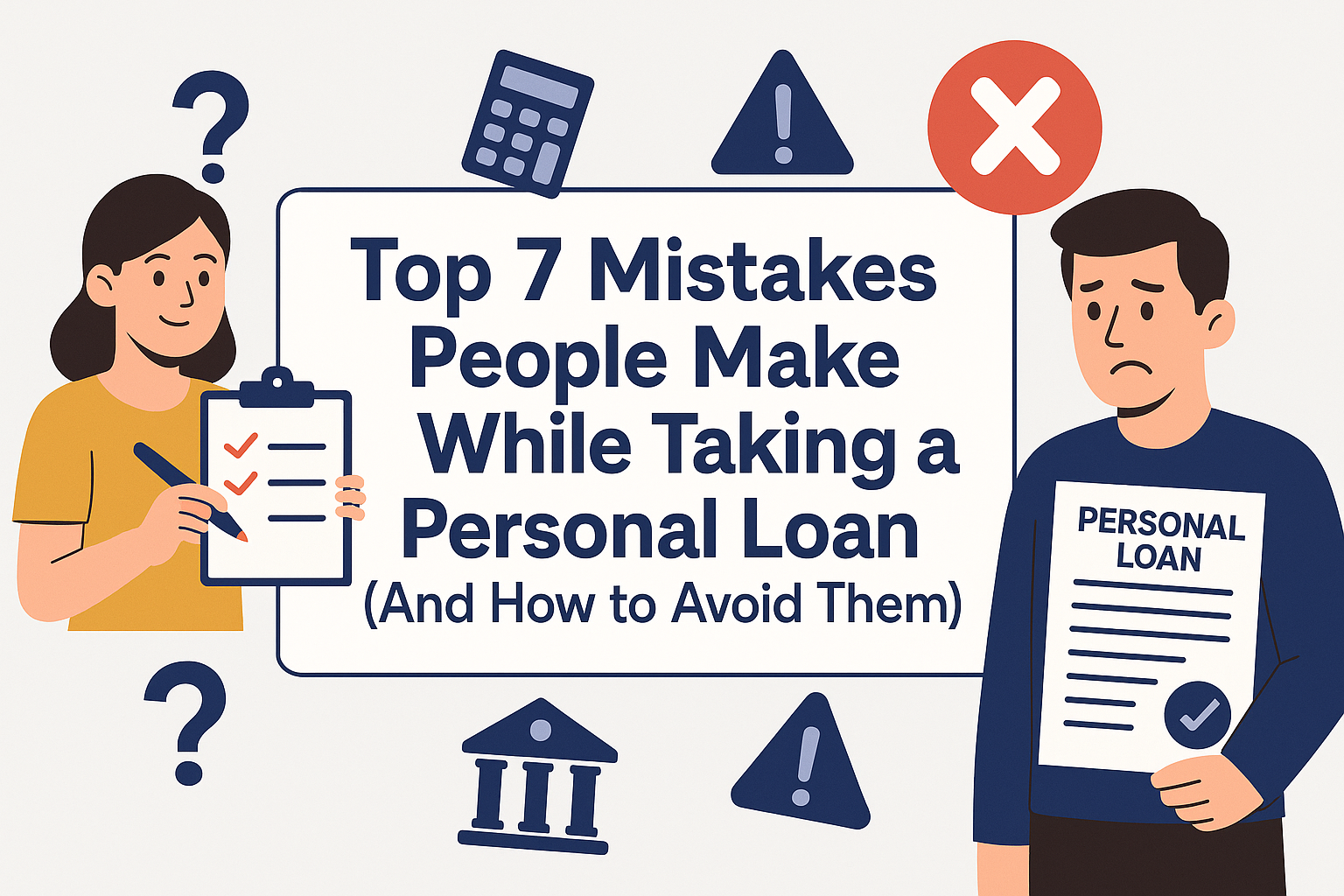Top 7 Mistakes to Avoid When Applying for a Loan in 2025
Getting a loan can be a huge financial relief—whether it’s for buying a home, starting a business, covering education costs, or managing an emergency. But one wrong move during the loan process can lead to rejection, higher interest rates, or long-term financial stress.
In 2025, lenders are more cautious than ever. If you’re planning to apply for a loan, it’s essential to avoid common mistakes that hurt your chances of approval or cost you more than expected.
Let’s break down the 7 biggest loan mistakes you should absolutely avoid—and how to do it right.
❌ 1. Applying Without Checking Your Credit Score
Your credit score (also known as a credit rating) is one of the first things lenders look at. A low score can:
- Lead to loan rejection
- Result in higher interest rates
- Lower the amount you’re eligible for
Many people don’t even check their score before applying, which is a risky move.
✅ What to do instead:
- Check your credit score through services like Tasdeeq (Pakistan), TransUnion, or your bank
- Aim for a score above 700
- If it’s low, take time to improve it before applying
❌ 2. Applying to Multiple Lenders at Once
You might think applying everywhere increases your chances—but it actually works against you.
Each loan application creates a hard inquiry on your credit report. Too many inquiries in a short time lower your score and signal desperation to lenders.
✅ What to do instead:
- Use online tools to compare offers without applying
- Apply to one or two trusted lenders only
- Wait to hear back before approaching another
❌ 3. Not Understanding the Total Loan Cost
Many borrowers look only at the monthly EMI, ignoring the bigger picture.
Here’s what they forget to check:
- Processing fees
- Late payment charges
- Insurance or hidden add-ons
- Prepayment or foreclosure penalties
- Interest type: fixed vs. floating
A low EMI doesn’t always mean a cheaper loan.
✅ What to do instead:
- Ask for a loan amortization schedule
- Calculate the total repayment over the entire loan term
- Read the fine print before signing
❌ 4. Overestimating Your Repayment Capacity
Many people take loans based on what they think they can afford. But unexpected events—like job loss, inflation, or medical expenses—can make repayment harder than expected.
Taking on a high EMI can lead to:
- Missed payments
- Penalty charges
- Credit score damage
- Legal action (in extreme cases)
✅ What to do instead:
- Keep your EMI-to-income ratio below 40%
- Leave enough room in your budget for emergencies
- Choose a longer tenure if needed for smaller EMIs
❌ 5. Not Providing Accurate Information
Small mistakes or inconsistencies in your application can raise red flags.
Common issues:
- Name mismatch across documents
- Incorrect income figures
- Outdated address or contact info
- Incomplete or missing documentation
This can delay the process—or get you rejected.
✅ What to do instead:
- Double-check all details before submitting
- Make sure documents like salary slips, bank statements, and ID are current
- Be honest—lenders verify everything
❌ 6. Ignoring Your Existing Debts
Some borrowers take out new loans while still juggling multiple EMIs, credit card bills, or buy-now-pay-later schemes. This raises your debt-to-income ratio and makes lenders nervous.
It also increases your chances of missing payments.
✅ What to do instead:
- Repay or consolidate small loans before applying
- Avoid new EMIs for a few months before your big loan
- Use online tools to check your loan eligibility with current debt
❌ 7. Not Comparing Interest Rates and Offers
This is perhaps the most expensive mistake you can make.
Different lenders offer different interest rates—even for the same borrower. If you accept the first offer you get, you could end up paying thousands more over time.
✅ What to do instead:
- Compare at least 3–4 lenders before choosing
- Use trusted comparison platforms or speak directly with banks
- Look beyond just the rate—consider fees, tenure, and customer service too
🚫 Bonus: Relying on Loan Agents Blindly
While loan agents or brokers can be helpful, some push high-commission products or add hidden charges.
If you’re not careful, you might get stuck in a loan that’s not right for you.
✅ Tips:
- Always read the agreement yourself
- Verify fees, charges, and repayment terms independently
- Avoid agents who pressure you to sign quickly
📋 Quick Checklist Before Applying
Make sure you’ve got these covered:
- ✅ Checked your credit score
- ✅ Reviewed your income and EMI capacity
- ✅ Gathered complete and accurate documents
- ✅ Researched at least 2–3 loan offers
- ✅ Understood the full cost of the loan
- ✅ Cleared or consolidated existing debt
- ✅ Know your repayment plan
🏁 Final Thoughts: Borrow Smart, Not Fast
A loan is a powerful tool—it can help you achieve major life goals. But rushing into it without proper planning can lead to stress, financial trouble, or worse.
To recap:
- Don’t ignore your credit score
- Avoid applying to too many lenders
- Read everything before signing
- Only borrow what you can repay
- Compare and choose wisely
In 2025, the best borrowers will be those who are informed, prepared, and cautious. Be one of them—and make your loan work for you, not against you.









Post Comment